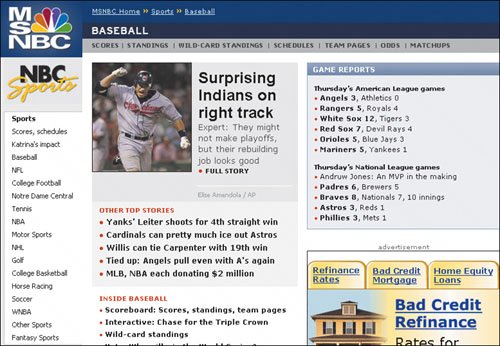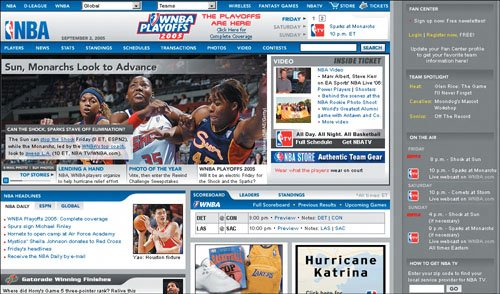Using White Space
| What's not present on your site is as important as what is. A page's "white space"the parts that don't have any text or illustrationsis important in content and visual design because it helps people process information into manageable units. Having adequate white space around groupings draws users' attention to key points without causing eyestrain.
Having adequate white space around groupings draws users' attention to key points without causing eyestrain. Visually crowded sites are overwhelmingmaking it difficult for users to quickly identify what's important and create order. Providing enough space around different groups relieves spatial tension. The idea is to maximize the perceptual distance between groups while minimizing the distance between items within a group. The generous use of white space around each major grouping visually pulls related topics together. The sparse compartmentalized presentation creates order so that information isn't competing for attention.  www.msnbc.com We know screen real estate is limited, and attempting to cram too much information on a page often does more harm than good. Screens that are packed with choices, text, links, and bright colors cause eyestrain, especially if users stay for any extended period of time. Increasing white space on your site means making trade-offs. Some elements might need to be removed or made less prominent. In most instances, it's worth it. Less is more. The extraneous use of graphical treatments and lack of white space creates a busy-looking homepage. It's difficult to separate the headlines and the content because everything blends together. With so much visual activity, how do users know where to go first?  www.nba.com |
EAN: 2147483647
Pages: 107